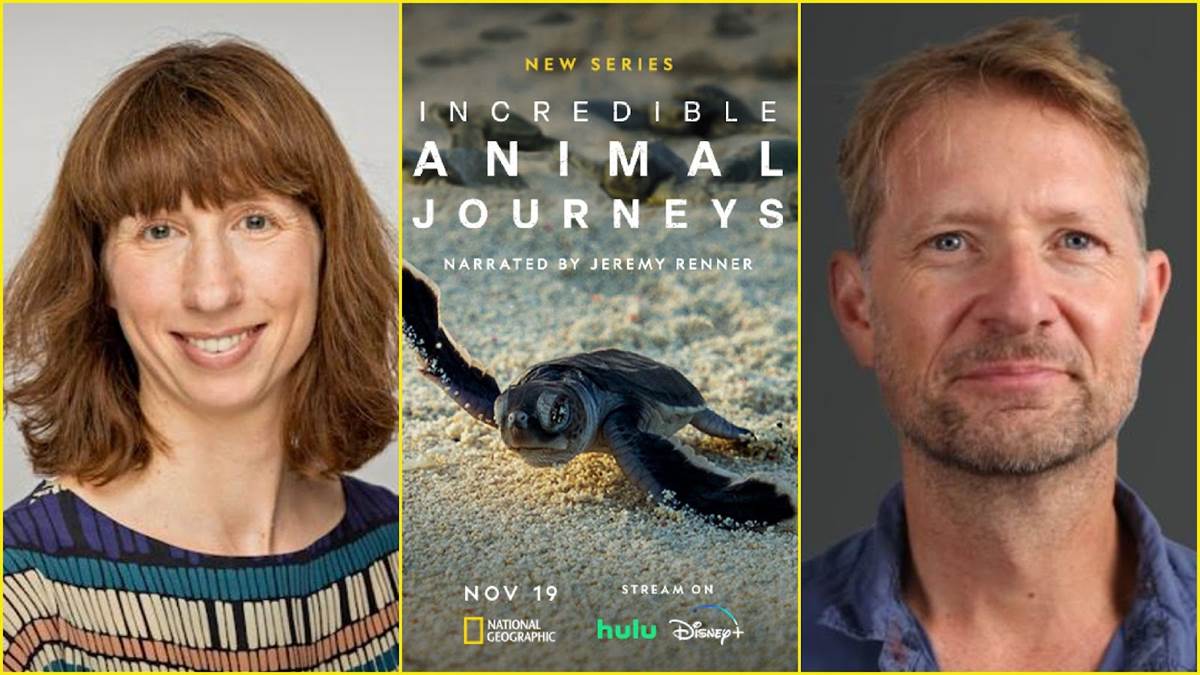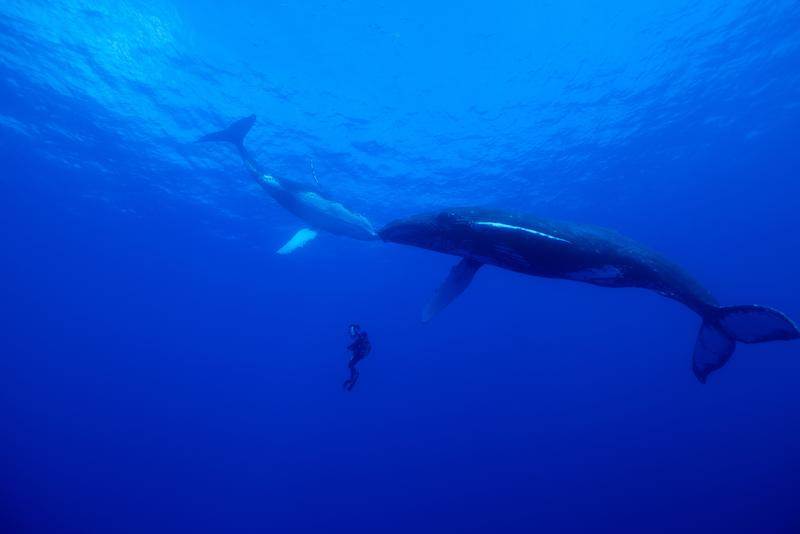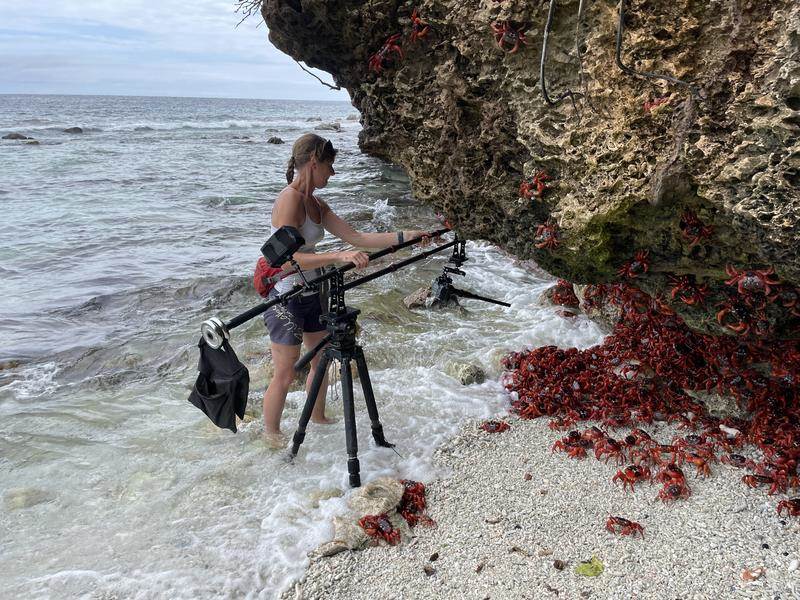National Geographic’s Incredible Animal Journeys took a lot of time and innovation to bring to life. I had the honor of interviewing Executive Producers Sarah Gibbs and Mark Brownlow about the new series, which ambitiously documents the migration of countless species. With never-before-recorded animal behaviors witnessed, plus narration from Marvel Studios superstar Jeremy Renner, find out what it took to bring this incredible new nature documentary series to life.
Alex: Congratulations on the launch of Incredible Animal Journeys. How did this project come to be? What was the initial scope, and did it change at all as you were receiving footage?
Sarah Gibbs: Initially, we set out to make a series about Incredible Animal Journeys because as humans, we think we're great explorers. We think we've conquered this planet. But actually, we'd be lost without a map or our phones. And animals are the real heroes of this world. So our mission was to find the greatest animal journeys, the greatest stories within those with real emotion and real characters. Also, the bar is set very high for these things, with world-first, new science bringing all of that to bear. So we set out to do that. Obviously, as you start making it, you can't write a script for animals. You can set out with an intention. We knew we wanted to follow humpback whales. We knew we wanted to follow barn swallows. We knew we wanted to follow polar bears. We knew our main stories. But as you go out to film, actually, the natural dramas really take over. And the animals start to write the script for you. We couldn't have imagined some of the moments that we got, and we've got some really standout moments in this series. And then those helped shape our narrative. As you know, we made these shows over three years; an enormous amount of footage and an enormous amount of filming. So we have a wealth of material to draw on, whether it's a humpback birth, which is the first time it's ever been filmed, or the first time that southern sea lions have been filmed cooperatively hunting gentoo penguins. And we have to then meld them all into a coherent, amazing story that will engage people.
Mark Bronlow: I've been making wildlife films for 25 years, and we're spoiled for riches in this series. The range and complexity of behaviors captured really profoundly move you when you see them and afford utmost respect for your animal characters in terms of the trials and tribulations they go through. For instance, I produced Blue Planet II. And yet Sarah and the team captured a humpback whale birth. This is the holy grail of wildlife filmmaking. They captured it. They captured the extraordinary moment. Another whale, wrapped in plastic and slowly dying, circled by tiger sharks, was rescued by a fellow traveling whale. This is an expression of kindness that we hear about through scientific journals but never would dream of being able to be that lucky, fortuitous to capture on camera. There are moments when a little barn swallow has to dodge tigerfish that jump out of the water to try and grab them midair; that's never been filmed before. Time and time again, new behavior with new camera technology is wrapped up in an engaging story that will grip a family audience, where we follow a journey from beginning through to the end in a contemporary setting. I think this is a magnificent series.
Alex: Was technology the secret to getting some of those never-before-caught-on-film moments? With whale births, I know that sometimes the mother is surrounded by other whales for protection, so getting close is impossible.
Sarah Gibbs:
You definitely can't film a whale who doesn't want to be filmed. Animal welfare is absolutely paramount in making a series like this. So, particularly with humpback whales, we were filming in Hawaii; whales are hugely protected in Hawaii for absolutely good reason. We've partnered with a team of scientists who study whale births and who understand it. And we spent a great deal of time with those animals. With something like the whale birth, it's not really technology that allows us to get close there. It's time. It's an understanding of animal behavior. Because technology under the water, it's changed, but it's not changed a lot. We've just got smaller cameras. It's like your phone. It's got a much better camera in it now than it did 10 years ago. What's extraordinary about that moment is we were following a heat run or a comp pod. That's when the males are pursuing a female looking for the chance to mate. We didn't realize it was going to be a birth until the chasing stopped. The divers went in the water, they saw a tail. Popped up, said, "Oh, I can see a tail." And what was extraordinary about that is that scientists really don't understand this moment, because they've not seen it. So the males did hang around and stand guard. And they don't quite know why that is. Maybe they're protecting her, or maybe they're just still waiting for a chance to mate. But all of that footage now becomes an amazing resource. And that's why it's such a privilege to make something like this for National Geographic and Disney. All of that footage now can be used for science. The scientists will now write a paper about that behavior. So that's not necessary technology per se. In other instances, it is technology. It's about building new kinds of drones that allow us to fly really fast so we can mimic the flight of a wandering albatross. So some of it's technology, some of it's being in the right place and the right time. But yeah, there are definitely advances, particularly with drones or with camera traps, where we do a lot of building to try and get the right tool for the right job to get us that absolute moment.
Alex: One of the moments that really stuck with me was getting a crabs-eye view of the world. Are you using RC cars with cameras on top to follow them? Or how are the cinematographers capturing such low-to-the-ground footage?
Sarah Gibbs: Christmas Island red crabs, they have to make a five-mile migration to the sea. They're one of Mark's favorite animals in the series, I think, because they're a crab but they can't swim. A lot of time was spent on the island. We use really low-slung, under-slung cameras that are gyro-stabilized. We use a lot of tracking, and that enables us to follow them. To give you an idea of their size, they're on four-inch legs, so they're hand-sized. They're a pretty big crab. But they're a kind of comedy character in that episode. Actually, they're really endearing. They're this bizarre creature that somehow knows when to come out of their burrows and head to the ocean. They come out on the last quarter moon and all head to the ocean at once. And you're like, "How do they do that?"
Alex: Yeah, that was an incredible moment in the series. For my final question, what did Jeremy Renner’s casting as the show’s narrator bring to the narrative?
Sarah Gibbs: It's always a big discussion between us and the studio about who the narrator will be. You always want the perfect fit for the story. When Jeremy was suggested, we felt he had a really good voice and gravitas and was really emotionally engaging. We were already in the edit. And at that point, you start thinking about writing a bit more in his voice. We're always writing for an American voice, so then you start making it more relatable to him. Then, through those narration record sessions, we worked with him to make sure it was in his voice.
Alex: Thank you very much for your time, and congratulations again on a fantastic series.
Incredible Animal Journeys debuts on Sunday, November 19th, with two episodes starting at 9/8c on Nat Geo, with new episodes on subsequent Sundays. The entire seven-part series will also be available to stream on Disney+ and Hulu beginning November 20th.



